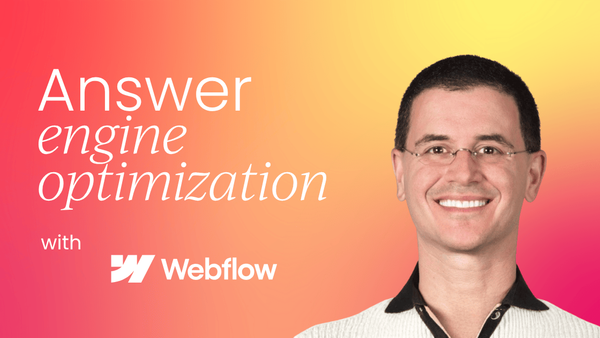The way people discover and connect with brands is quickly changing.
Large language models (LLMs) are reshaping how information is presented online, rewriting brand narratives, and, in many cases, reducing the amount of organic traffic that websites once relied on.
In a recent Webflow study, we found that only one in four marketing practitioners felt confident they understood answer engine optimization (AEO).
Yet, 93% of chief marketing officers (CMOs) believe AEO will be critical to their company’s success within the next two years.
For CMOs and the search engine optimization (SEO) leaders who support them, the challenge is urgent and clear: How do you build brand presence and drive growth in a world where AI-powered experiences increasingly filter and interpret search results?
At Webflow, we believe the answer lies in the four pillars of AEO – content, technical, authority, and measurement. We recently introduced the AEO maturity model.
Here, we’ll focus on the content pillar and explore how organizations can systematically evolve their content strategies to capture visibility, earn authority, and create meaningful buyer experiences in the age of AI-driven search.
An AEO content breakdown
If there’s one idea to remember, it’s this: AEO isn’t about chasing keywords – it’s about understanding buyer intent and creating content that delivers genuine value.
This shift means creating content that not only ranks but also resonates – fueling personalized, trustworthy, and scalable experiences. To illustrate this, let’s walk through five levels of maturity that mark the journey from keyword-driven SEO to fully programmatic, personalized AEO.
Level one: Keyword-focused content
Most teams begin with content designed around page-based SEO. At this stage, the emphasis is on keyword-rich product pages – such as homepages, landing pages, or About Us sections.
Blogs and FAQs, which LLMs often prioritize for their structured answers, are often missing or stale.
The result? Organic traffic is mostly branded search, meaning you’re capturing people who already know you. The challenge here is to evolve beyond keywords and start answering real buyer questions.
To achieve the next level:
- Practitioners can identify the top 10 questions buyers ask on sales calls or support tickets and build or refresh content that answers them clearly.
- Leaders can ask, “Which questions consistently surface in our winning deals, and how are we answering them?”
Level two: Some answer-oriented content
At this stage, teams begin shifting from keyword repetition toward answer-first content. Pages start surfacing in featured snippets, and about half of the content is fresh and updated.
Still, strategy remains largely keyword-driven, and answers are isolated rather than comprehensive. The challenge to advancing now is scale.
To achieve the next level:
- Practitioners can build multiple answer pages around five priority buyer questions, improve readability (aim for a Flesch score of 80-plus), and structure content with subheads that AI engines can easily extract.
- Leaders can ask, “Which buyer questions naturally connect, and how can we scale consistent storylines across them?”
Level three: Clusters of questions
Here, content evolves into structured clusters.
Instead of scattered answers, teams develop semantically rich pages that connect questions across the funnel – from awareness (“What is customer relationship management (CRM)?”) to advocacy (“advanced CRM strategies”).
Authority grows, but the challenge is discipline. Teams must link clusters under a hierarchy so they own entire topics, not just pockets.
To achieve the next level:
- Practitioners can create flagship content – such as an annual report – that anchors each cluster, and establish a clear refresh cadence (e.g., update high-priority pages every three to six months).
- Leaders can ask, “Which flagship assets will anchor our authority this year, and where can we differentiate with original insights?”
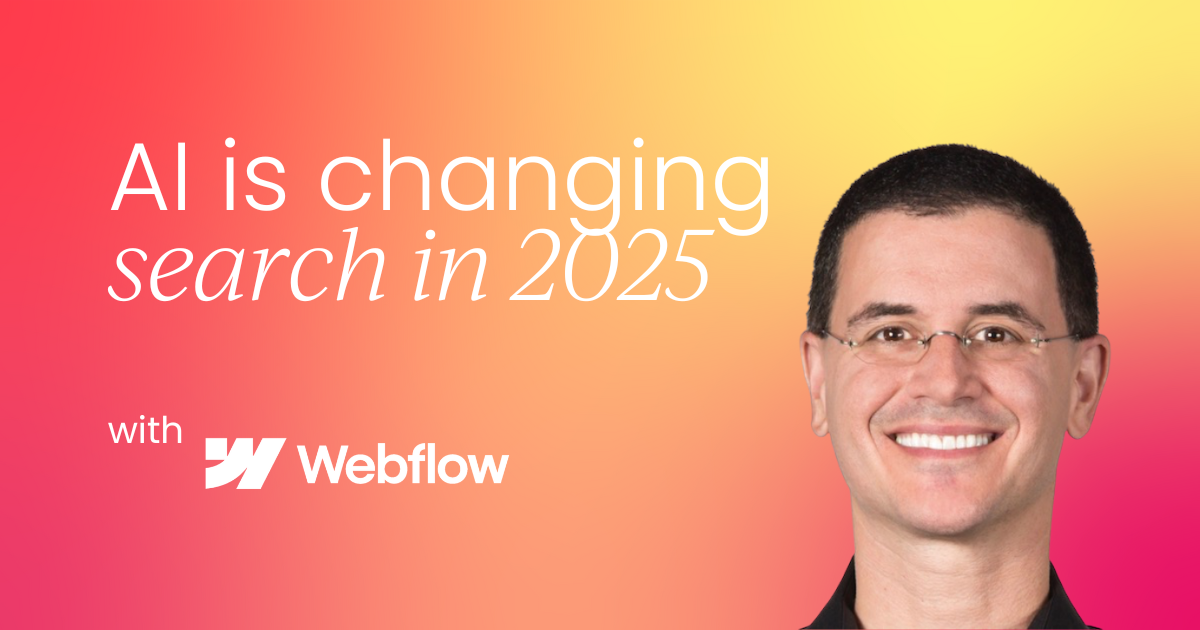
Level four: Hierarchy-driven content
At level four, content becomes hierarchy-driven, with a clear intentional structure spanning the entire funnel.
Each major topic is anchored by a flagship piece, surrounded by supporting content that answers related questions. Updates are consistent, localization is prioritized, and underperforming content is pruned.
The next challenge is personalization.
To achieve the next level:
- Practitioners can start tailoring content by persona, industry, or use case, and experiment with new formats like video or interactive graphics.
- Leaders can ask, “Which content assets drive the most impact, and how can we personalize them further to accelerate conversion?”
Level five: Programmatic, personalized content
At the most advanced level, teams practice programmatic AEO. Content is fully personalized by segment, persona, account, or even individual.
While overall traffic may shrink, conversion rates rise thanks to tailored storytelling and experimentation with new formats – interactive tools, calculators, and AI-driven experiences.
The challenge becomes sustaining innovation.
To maintain this level:
- Practitioners can expand interactivity, monitor AI outputs to ensure your answers surface, and continuously refresh personalization as new segments emerge.
- Leaders can push the boundaries by asking, “What new formats keep us ahead, and how do we ensure our flagship content remains industry-defining?”
From strategy to action: Webflow’s perspective
The payoff? Greater control of your brand narrative in AI-driven search and more growth from the content you already own.
To dive deeper into how leading teams are approaching this shift, watch our on-demand webinar, Searching for the answer: Best practices to win at Answer Engine Optimization (AEO), featuring Ethan Smith of Graphite and Guy Yalif of Webflow.
Ready to take the next step? Connect with our team to explore how Webflow can help accelerate your AEO strategy.
Webflow is the AI-native Website Experience Platform that empowers teams to visually build, manage, and optimize stunning websites that offer both the consumer experience customers expect and the enterprise-grade performance and scale they need.
With a visual, composable CMS at its core, Webflow gives teams full control over their websites without reliance on engineering. Its AI-driven personalization enhances user experience and optimizes site performance, helping businesses drive higher conversion rates and measurable growth.
Today, over 300,000 of the best companies in the world, and more than 1,500 Certified Webflow Partners, create best-in-class, high-performing sites with Webflow.
Note: This article was created by Webflow.






.png)


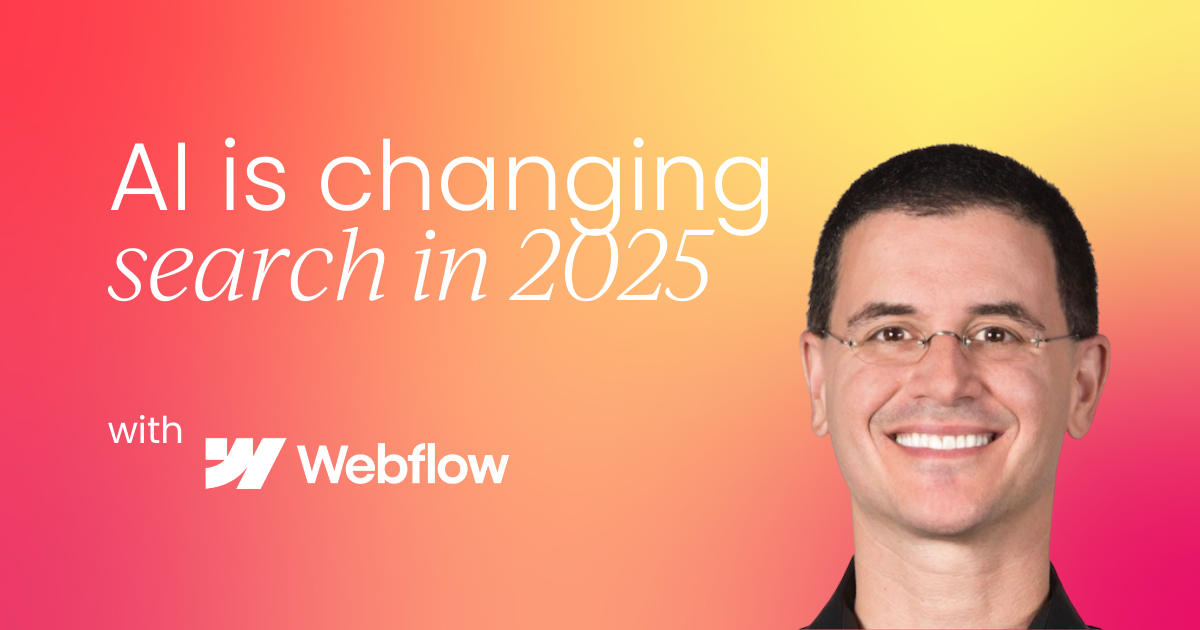
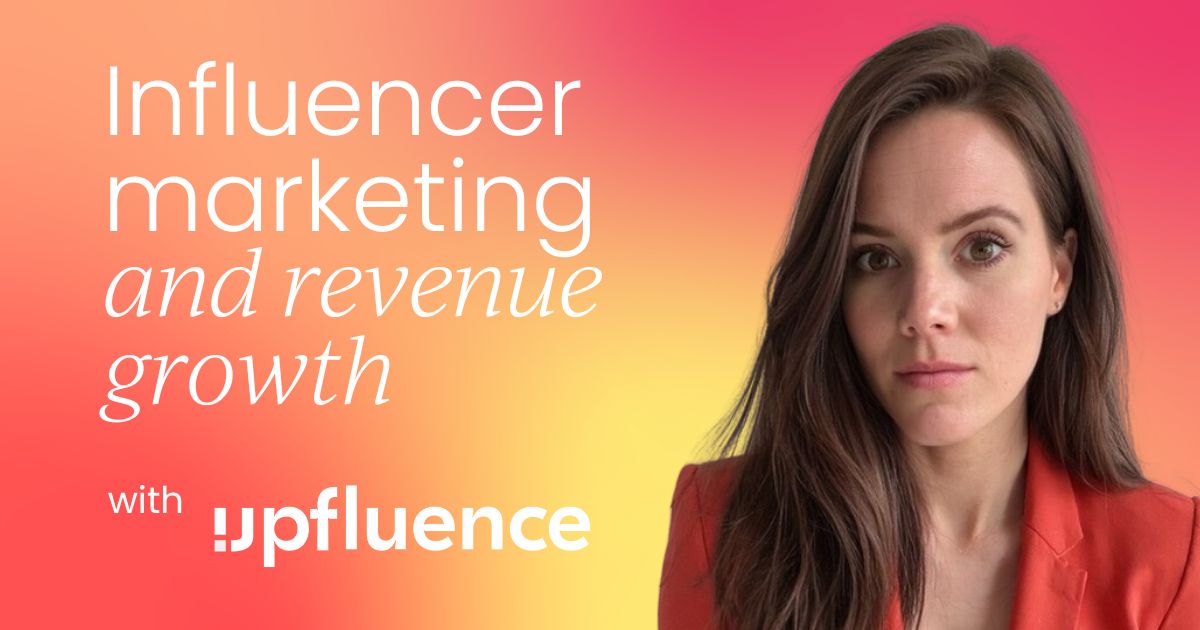
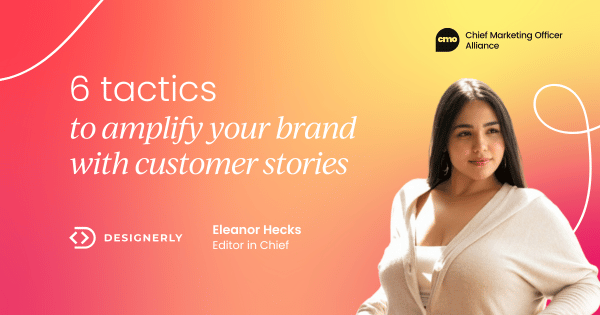




 Follow us on LinkedIn
Follow us on LinkedIn


